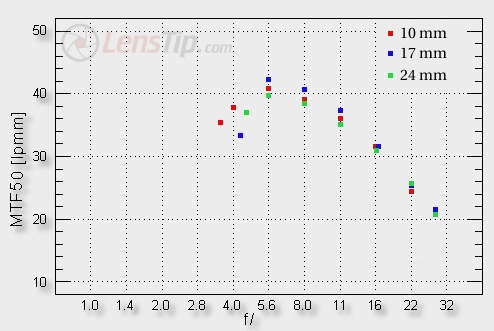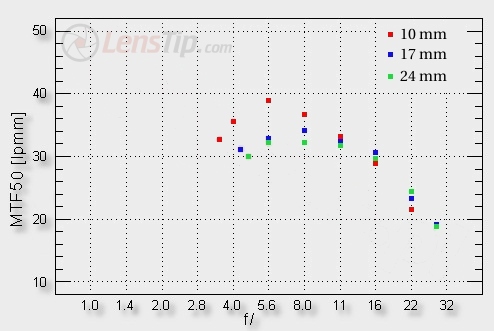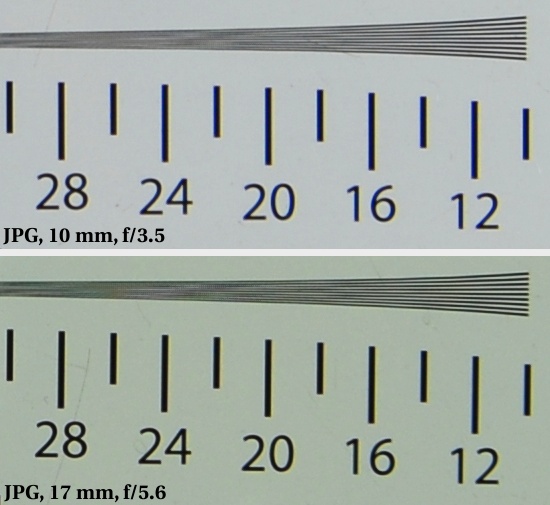Nikon Nikkor AF-S DX 10-24 mm f/3.5-4.5G ED
4. Image resolution

The view, which can be seen here, gives us nothing to complain of. We don’t have any reasons to excessive admiration either because the best lenses, tested on D200, reach the values of 46-47 lpmm level. The highest result the tested lens gets at f/5.6, where it reaches the level of 40-43 lpmm.
Please Support UsIf you enjoy our reviews and articles, and you want us to continue our work please, support our website by donating through PayPal. The funds are going to be used for paying our editorial team, renting servers, and equipping our testing studio; only that way we will be able to continue providing you interesting content for free. |
- - - - - - - - - - - - - - - - - - - - - - - - - - - - - - - - - - - - - - - - - - - - - - - -
It’s good to remember several things, though. Firstly, the more expensive Nikkor 12-24 mm obtained the maximum results near 40 lpmm. Secondly, the Nikkor 10-24 mm, tested here, gives fully useful and sharp pictures from as soon as the maximum relative aperture. In the 10-17 mm range it is very much alike to its predecessor but for the longest focal length it is significantly better. The comparison with the Tamron 10-24 mm is also favourable for the Nikkor 10-24 mm. The Tamron 10-24 mm is noticeably better at 10 mm but also significantly weaker towards the long end.
In actual fact the only worthy opponent of the Nikkor, tested here, is the Canon 10-22 mm. On a Canon 20 D sensor, with lower pixels density, it reaches higher MTF values than the Nikkor, especially at longer focal lengths.

When we look at the frame edge behaviour, presented in the picture above, the lack of record breaking results in the frame center will perhaps become more obvious. It is not impossible that the lens was designed this way, to improve the edges at the expense of the frame center.. The edges do look fabulous – it’s the best performance among all the tested ultra wide angle zooms, designed to work on APS-C/DX sensors. The lens reaches or exceeds the level of 30 lpmm from the maximum aperture and at the most important, in this case, 10 mm focal length it achieves as many as 39 lpmm; it means the landscapes, shot with it will be sharp from one edge to the other.
The Nikkor 10-24 mm simply knocked out its older 12-24 mm brother, which had the results exceeding 30 lpmm only on stopping down to at least f/5.6. Also the Tamron 10-24 mm fared worse here at every single focal length. Once again the strongest competitor is the Canon 10-22 mm but this time the Nikkor wins the duel.
To sum up, the results make the Nikkor difficult to fault in this category. Sharp images in the frame center and on the borders from an ultra wide angle lens is a feat hardly anybody can accomplish.
Traditionally, we end this chapter with the test chart center crops. We present the JPEG files, saved along with the RAW files - our basis of the MTF50 values measurement.
 |






